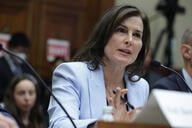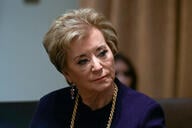You have /5 articles left.
Sign up for a free account or log in.
The challenges colleges and universities face are well documented and often intimidating.
Population trends will leave institutions in some parts of the country without enough traditional-age local students to fill classrooms, while stretching others’ capacity. Costs keep escalating, high sticker prices are a consistent source of angst and constantly rising discount rates leave many private colleges in the difficult position of not having enough money coming in even as they’re perceived by students as being too expensive.
Yes, market conditions are difficult. But that doesn’t mean higher education’s leadership will escape scrutiny. It’s worth wondering if governance practices currently in place are adequate for attracting good leaders, training them and putting them in a position to succeed in the face of challenges.
Some experts believe solutions have to start at the top, with changes to the way shared governance plays out between trustees, administrators and faculty members. Among them are the authors of two books released in January by Johns Hopkins University Press, How to Run a College and How University Boards Work.
“Can American higher education navigate through uncharted waters if the leadership relies on an unprepared, inexperienced captain and crew?” ask the authors of How to Run a College, Brian C. Mitchell and W. Joseph King. Mitchell and King are both experienced college presidents and trustees who believe higher education’s most important challenge is professionalizing its governance.
Failing to professionalize governance isn't good for anyone, said Mitchell, a former president of Bucknell University and Washington & Jefferson College, in an interview.
“There should be a clear delineation of authority and a clear understanding -- and a transparent understanding -- of how power is executed on a college campus,” he said. “Until then, we have a kind of mom-and-pop approach to governance, and that’s not serving anyone well.”
Mitchell and King argue that higher ed is suffering through a particularly bleak period, one that can seem unprecedented. But viewing the current era as a historical outlier can lead to damaging paralysis among college and university leaders. It is also historically inaccurate.
American higher education has already gone through and survived two similar periods of pressure, according to Mitchell and King. The first was a depression in the 1870s, and the second was the Great Depression of the 1930s.
Those eras, which the authors refer to as inflection points, were marked by hundreds of colleges and universities merging or closing. But they were also times of great adaptation and innovation.
Colleges and universities are nimble, Mitchell said. If today is indeed a third point of inflection, lessons can be drawn from the past to help colleges and universities survive.
Mitchell and King argue for colleges and universities to evolve, modernizing practices and monetizing assets. They examine major elements of college operations: governance, finance, enrollment advancement, academic affairs, student life and athletics. They support shared governance, but it’s clear they believe the system could work better if all parties refocused on educational strategies and transparency between different leaders.
“It’s a misunderstanding of what trustees do, what faculty do and how their work relates that causes many problems,” said King, who is president of Lyon College. “If you have substantial malfunction or dysfunction, it’s not going to go anywhere.”
Some of the authors’ greatest concerns are focused on the state of governing boards. Mitchell and King believe boards are often too big and too dysfunctional. Those at private universities often run more than 40 trustees deep and come with internal politics, which leads to complacency, they write.
While public universities may have board issues of their own, including charges that trustees are politically motivated or appointed, their boards are typically smaller than private boards and therefore don't attract as many criticisms related to size.
Voting boards should have no more than a dozen active members, Mitchell and King argue. Larger advisory boards can also play a separate role, approving policy and preventing boards from becoming insular, but they should be geared toward offering advice and helping with fund-raising.
It’s a model like the one used by Harvard University, where the 30-member Board of Overseers influences strategy and carries certain responsibilities but is eclipsed in direct power by the 13-member Harvard Corporation, which has fiduciary responsibility and approves major operations.
A Focus on Trustees
In How University Boards Work, Robert A. Scott doesn’t go so far as to advocate for limiting voting boards to 12 members. He thinks 12 is on the small side, he said in an interview. Yet he also advocated for limiting the size of voting boards.
“It depends on the institution,” he said. “Eighteen would be the low end -- certainly no more than 30. Eighteen to 24 is manageable. You can get in touch with everybody in a day.”
Still, Scott, who is the former president of Adelphi University and Ramapo College, sees plenty to worry about in boards. Among his many concerns are that board members often know little about the higher education enterprise or their own institutions, and that board chairs sometimes act like emperors. Trustees with experience on other boards or in business frequently believe they do not need a guide when they start on college or university boards, he writes. Unfortunately, that’s not the case.
Trustees need to be much more knowledgeable about their institutions than they are today, Scott believes. They need to know a college’s history and heritage, its competitors and where it fits in the overall higher ed ecosystem. They also need continuing professional development. That support will help them understand how to navigate challenges.
Scott also argues for trustees to spend more time listening and asking questions -- and for others in university governance to do the same. He advocates for presidents to eschew the corporate-style chief executive officer role in lieu of a chief education officer ideal, with an emphasis on being collaborative. Boards, he writes, should be a president’s partner in establishing priorities.
Toward its end, How University Boards Work includes a list of ideas best described as policy priorities. For instance, Scott writes that colleges should be held accountable for graduation rates. He suggests they might pay more attention to student retention if they were forced to repay public financial aid dollars for students who drop out before graduating -- an idea that has parallels in risk-sharing concepts that have drawn interest at the federal level. He also suggests making non-need-based aid count as taxable income for a recipient’s family, because so-called merit scholarships are a major cost driver among colleges.
The ideas are presented alongside some changes colleges and universities could make on their own, like modifying class schedules to make better use of facilities. But the inclusion of policy ideas in a book aimed at trustees fits a larger idea: the big picture matters for colleges and universities, and their leaders, as they face the future.
It’s a theme running through both books, even though they dedicate many of their pages to the basics of running a college or university. In practice, the big picture could mean a faculty member taking a more active role in student life, because much of what students learn on campus comes from outside the classroom. It could mean presidents being more engaged and transparent with faculty members, even in times of crisis. It could mean trustees advocating for higher education funding when they’re meeting with politicians.
“Enterprise risk is not just about one’s own institution,” Scott said. “It’s about the whole enterprise.”




